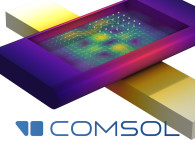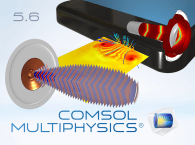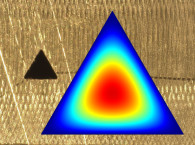Multiphysics modeling, simulation, and application design software specialist, COMSOL, announced the release of COMSOL Multiphysics version 5.2 providing the simulation community with a fully integrated environment for creating simulation apps. This version of COMSOL Multiphysics and COMSOL Server simulation software environment delivers new features, improved stability and robustness, and faster execution.

Major upgrades to the Application Builder available in COMSOL Multiphysics include the new Editor Tools for easy creation of user interface components, commands for dynamic updates of graphics, and more control over the deployment of simulation apps. Running simulation apps using COMSOL Server in a corporate network or in the cloud is now up to five times faster. Many updates, new features and simulation application examples are also available for the add-on electrical, mechanical, fluid, and chemical products.
The new features in version 5.2 of COMSOL Server are designed to facilitate collaboration between users and departments while simplifying administration tasks. “A new caching function allows applications to start five times faster or more; additionally, administrators can assign a single application to be launched instantaneously when users log in,” explains Ed Fontes, CTO of COMSOL. “These are just few of the many new features and concepts introduced with version 5.2."
In COMSOL Multiphysics 5.2, the Application Builder features an optimized workflow. The new Editor Tools make the creation of user interface components easy and quick. Simulation specialists can now bring any model parameter, physics setting, and results, such as numerical data and plots into the user interface of an app with a few mouse clicks. This is one of several tools available to create practical simulation apps and share the power and accuracy of COMSOL Multiphysics throughout organizations.
Among the new user-inspired features is the ability to update graphics while running an app. The app designer can present app users with different plots while solving; this takes them through the progression of the solution process and presents them, for example, with geometry, mesh, and solution plots. The app designer can also customize the graphics toolbar with new buttons and include camera movements.
Version 5.2 also provides new core functionality features inspired by feedback from the growing COMSOL Multiphysics user community. For example, users can now add annotations to 3D and 2D plots. A new tetrahedral meshing algorithm minimizes the need for manual interactions when meshing large CAD models. Mesh Parts are introduced for integrating STL surface meshes and NASTRAN volumetric meshes into the geometry building work flow. The use of selections is expanded upon and can now be used for singling out which parts of a solution should be used in results processing and visualizations.
Version 5.2 also introduces enhancements to the existing functionalities of COMSOL Multiphysics and its add-on products. Users will benefit from more flexible license management, allowing them to work on their designs knowing that if the connection to the license manager is disrupted they have the option to save their files and resume once a connection is reestablished.
Users of the Structural Mechanics Module and the AC/DC Module will benefit from the new External Materials functionality allowing materials to be algorithmically defined by shared library files written in the C language. The most prominent use of this new functionality will be for nonlinear materials that include hysteresis (history dependency) and irreversibility effects.
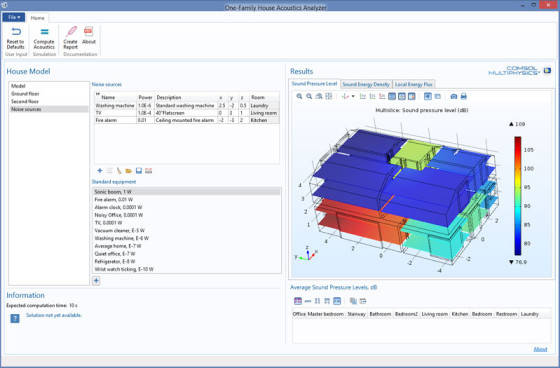
Extensive Library of Apps in Version 5.2
To demonstrate the power of the Application Builder, a plethora of new apps have been added to the extensive Application Libraries showcasing the capabilities of the Application Builder. The Application Libraries include apps ranging from membrane dialysis, water treatment, thermoelectric cooling, heat exchangers, touchscreen design, magnetic prospecting, piezoacoustic transducers, muffler design, MEMS sensors, and pressure vessels.
“With version 5.2 we ship about 50 apps demonstrating the depth and power of the Application Builder and the COMSOL Server,” says Svante Littmarck, CEO of COMSOL. “These apps are meant to provide COMSOL users with examples that can be easily inspected, edited, and used as a starting point for their own applications. We had a lot of fun building these apps and love the new Application Builder functionality! For example, if we take a look at the Mixer app, which ships with the Mixer Module, we are presented with a sophisticated application that can be used to simulate almost any type of mixer without requiring expertise in differential equations or CFD. This takes modeling and simulation to a whole new level.”

New Acoustics apps
With COMSOL Multiphysics 5.2, the Acoustics Module now features a new Absorptive Muffler Designer demonstration app. Mufflers are used to attenuate noise emitted by a combustion engine, for example, and should typically perform well in a specific frequency range. Attenuation is measured through transmission loss, which gives the damping in dB as a function of frequency.
The Absorptive Muffler Designer simulation app is used for studying and designing a simple resonant muffler with a porous lining. With the app, you can perform an analysis of both inductive and resistive damping in a muffler of your choosing. The app enables you to study the results after changing the dimensions of the muffler, the ambient working conditions, and the material properties of the porous liner.
Another new app is the One-Family House Acoustics Analyzer which is used to assess noise propagation in coupled rooms inside of a two-story house consisting of ten rooms. The app determines the sound pressure level (SPL) distribution in the house based on a number of sources that are interactively placed throughout the home.
It represents a classical room acoustics problem where engineers or architects want to determine the noise environment in a system of coupled rooms, such as homes, office spaces, or workshops. This is important when ensuring that an acoustic environment complies with noise and work regulations, for instance.
An engineer or architect can bring an app like this on-site and test different noise source scenarios and wall insulation characteristics. They can then compare the simulation results with actual measurements. The application lets place, remove, and define multiple acoustic sources in different rooms of the house in order to determine the resulting SPL distribution. The acoustics are modeled using the Acoustic Diffusion Equation physics interface in COMSOL Multiphysics, which is both fast and efficient at determining SPL distributions.
Another new app is the Organ Pipe Designer which allows to study the design of an organ pipe, and then play the sound and pitch of the changed design in a user-friendly app. The pipe sound includes the effects of different harmonics with different amplitudes.
The organ pipe is modeled using the Pipe Acoustics, Frequency Domain interface in COMSOL Multiphysics. The simulation app allows to analyze how the first fundamental resonance frequency varies with the pipe radius and wall thickness, as well as with the ambient pressure and temperature. The app allows finding the full frequency response, including the fundamental frequency and the harmonics. With a Java code written method, the app will detect the location and amplitude of all harmonics in the response, thus extending the analysis beyond the built-in functionality of the COMSOL Multiphysics user interface.
Analyzing acoustic reflections at surfaces of various structures is important for many engineering disciplines. The new Acoustic Reflection Analyzer for a Water-Sediment Interface app shows one such system where the analysis has relevance for underwater acoustics and sonar applications. The app analyzes the reflection and absorption coefficients of plane acoustic waves, scattering off of a water-sediment interface at different frequencies and angles of incidence. Moreover, the random-incidence absorption coefficients are determined for the studied frequencies.

New Acoustics Module features
COMSOL Multiphysics 5.2 introduces the newly dedicated acoustics plot, called the Octave Band Plot, to represent frequency-domain transfer functions, responses, sensitivity curves, insertion, and transmission loss. The plot has several built-in acoustics-specific features, such as predefined weighting (Z, A, C, and user-defined) and desired plot style (octave bands, 1/3 octave bands, or as a continuous curve). The band options correspond to plotting the average or integrated value of, for example, the squared pressure over a given frequency band defined by the mid frequency and the bandwidth.
The data input to an octave band plot is a frequency-domain solution. For example, it can be the acoustic pressure resulting from a Frequency Domain study or a parametric frequency sweep. The Octave Band Plot will automatically plot a given expression type on the dB scale, simplifying post-processing, as it is no longer necessary to define the expression as a variable. The input geometric entity level of the plot can be global, point, edge, boundary, or domain. On the last three, an average is automatically performed, making it easier to define and plot the average power, for example, at the model’s inlet.
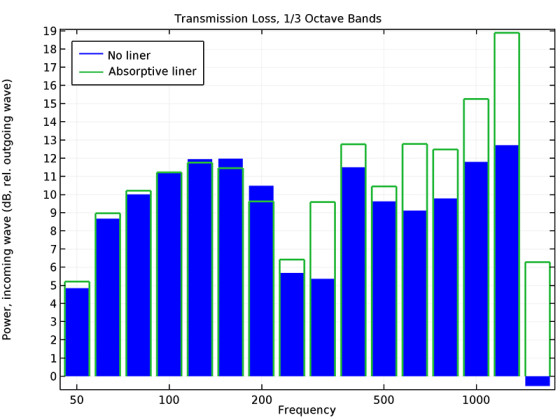
For Pressure Acoustics, Poroacoustics, and Narrow Region Acoustics, it’s now possible to simulate dissipated power density for all fluid models. The variable is called acpr.Q_pw and is located under the Heating and losses section in the Add/Replace Expressions menu when working with results. The expression is valid in the plane wave limit for traveling waves. The predefined variable is used in the Focused Ultrasound Induced Heating in Tissue Phantom tutorial model, where dissipated acoustic energy heats a tissue phantom.
In the Pressure Acoustics interfaces, the Normal Acceleration boundary condition is now supplemented by two new boundary conditions for prescribing a normal velocity or a normal displacement. This simplifies the modeling procedure when modeling sources in acoustics. An example of this can be found in the Generic 711 Coupler – An Occluded Ear-Canal Simulator tutorial model, where the source is defined via the Normal Displacement boundary condition.
The Poroelastic Waves and Elastic Waves physics interfaces are also updated and improved, with several features and boundary conditions. All of the acoustics interfaces include updates to the intensity variables, which are now consistent across physics interfaces and study types. Intensity is defined in the frequency domain (averaged values over one period) and the so-called instantaneous intensity is defined in the time domain. The intensity variables in the Thermoacoustics and Linearized Navier-Stokes interfaces now include the viscous stress contributions. The variables are available in the results when clicking on the Add/Replace Expression buttons.
When the Prescribed Velocity or Prescribed Acceleration nodes are present in your model, you can define how these boundary conditions should be interpreted in a stationary analysis. They can either be treated as a constraint (constrained), or ignored (free). This is particularly useful in models and apps with multiple mixed-analysis types, including frequency-domain, time-dependent, and stationary types.
The new release of COMSOL Multiphysics includes several minor updates and bug fixes and four new tutorial models have been added to the online Application Gallery.
To watch the release highlights video and download COMSOL Multiphysics version 5.2 now, click here.
www.comsol.com



